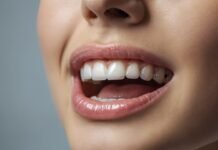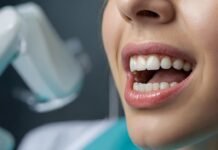Key Takeaways
- Clear aligners provide an inconspicuous and practical alternative for straightening teeth, helping many avoid the aesthetic and lifestyle challenges of traditional metal braces.
- Newer, more affordable clear aligner options have made orthodontic treatment more accessible to a broader group, including adults and teens.
- Continuous technological advancements are revolutionizing clear aligner treatment by making the process faster, more comfortable, and more tailored to individual needs.
- Clear aligners improve oral hygiene opportunities during orthodontic care, reducing the risk of gum disease, cavities, and other common dental issues associated with fixed braces.
- Research consistently supports the efficacy and safety of clear aligners for various orthodontic concerns, exceptionally mild to moderate misalignments.
The Rise Of Clear Aligners In Dental Care
Orthodontic care is no longer confined to teenagers sporting a mouthful of metal. The landscape has changed drastically in the past decade, with adults and professionals increasingly seeking treatments that provide practical results and minimal disruption to their lifestyle or appearance. Among the innovations capturing widespread attention are clear aligners, a method that has successfully bridged the gap between form and function. What has fueled this rise? It combines cosmetic appeal, remarkable effectiveness, and the newfound availability of affordable clear aligners in Tigard and beyond. Accessible pricing structures and more widespread provider training now ensure that clear aligners are no longer a premium service reserved for the few—instead, they’re a practical choice for many.
A cultural shift around oral health has also played a big part. People today are more aware of their smile’s lasting impact on self-esteem, personal relationships, and professional success. The growing trend of adults undergoing orthodontic treatment signals a transformation in societal norms. They report that more adults now actively seek orthodontic solutions, with clear aligners standing out due to their capacity to fit into busy lives without the stigma or upkeep of traditional braces. This shift is redefining dental care for all ages, making orthodontics practical and aspirational.
What Sets Clear Aligners Apart?
Modern clear aligners have taken orthodontic treatment a step ahead by focusing on user comfort and flexibility. Where fixed appliances often demanded strict dietary restrictions and brought daily frustrations, clear aligners deliver greater freedom. Users don’t need to worry about brackets breaking while eating popcorn at the movies or struggling to dislodge sticky foods after dinner. Instead, aligners are removed for mealtimes and easily popped back in afterward. This adaptability makes it possible to pursue orthodontic care with minimal interruptions to career, school, or social activities. This reality has caught on, especially among adults and image-conscious teens.
Another prominent advantage lies in the aligners’ composition and design. Built using high-grade thermoplastic materials and molded individually for each patient through 3D digital imaging, these aligners fit snugly and feel smooth against the gums and cheeks. That drastically reduces the irritations and sores seen with metal brackets or wires. Patients also find that aligners are discreet in photos, presentations, or face-to-face interactions—there’s no need to avoid smiling or hide your mouth. Most adjust to wearing and speaking with aligners in just a day or two, and the lack of intrusive hardware allows for a seamless transition back into day-to-day routines.
Understanding The Clear Aligner Process
Clear aligner therapy is a method that uses high-tech precision and user-friendly convenience to improve a patient’s smile. It begins with a detailed consultation where a dental provider examines the patient’s teeth, bite, and jaw structure. A digital scan is then used to capture a precise, three-dimensional image of the teeth and gums, eliminating the need for impression trays. This data is then fed into digital treatment planning software, which creates a customized “roadmap” for tooth movement. The process involves reviewing the patient’s oral health, lifestyle, and expectations, ensuring clear aligners match the case. The digital scanning creates a clear baseline for tracking jaw and tooth movement, and the treatment plan is specified using digital planning. Each transparent set is worn for 20-22 hours daily, replaced every 1-2 weeks with the next stage. Progress checks are conducted to confirm progress and optimize results. After active treatment, a retainer is provided to preserve the outcome. This innovative process combines hands-on care with innovative technology, allowing patients to track their progress every step of the way.
Clear Aligners And Oral Health
The oral health benefits of clear aligners can be profound. Fixed braces often trap food particles and plaque, heightening the risk of cavities, gum disease, and even chronic bad breath. Clear aligners solve this challenge by being removable, enabling wearers to brush and floss thoroughly after every meal. The result? Less plaque buildup, more consistent gum health, and a much lower likelihood of white spots or permanent tooth discoloration after treatment. Patients using clear aligners showed significantly less inflammation and improved periodontal health compared to conventional braces.
Another key benefit is freedom from common orthodontic “off-limit” foods. Wearers don’t have to give up fruits, nuts, or crunchy vegetables, so long as they remember to remove aligners before eating. This helps maintain good nutrition throughout the process, supporting the overall health of both teeth and body. Easy aligner removal paired with intense oral hygiene routines means fewer unplanned dental visits and more predictable, healthy outcomes.
Who Can Benefit From Clear Aligners?
The ideal clear aligner candidate is someone with mild to moderate dental misalignments, such as crowded or spaced teeth or slight bite irregularities. Many teens and adults alike appreciate how aligners address cosmetic and functional dental needs in a discreet, manageable fashion. Even those who previously missed the chance for orthodontic treatment as teens can often benefit, finding that aligners offer a convenient path to renewed confidence. In some cases, even individuals with more complex dental issues are now suitable for clear aligner therapy as evolving designs and planning capabilities expand the range of treatable cases.
Still, dental professionals caution that not every case is a good fit. Traditional braces or surgical options may better handle severe jaw misalignments, major bite problems, or teeth requiring rapid vertical movement. During the consultation, a comprehensive exam and digital scan help clarify the best approach, supporting safe, optimal results for every unique patient. Customized care is critical—no two smiles are alike, and a one-size-fits-all solution isn’t always the answer.
Current Trends In Clear Aligner Technology
Clear aligners are a testament to how quickly dental innovation moves. Newer materials offer better flexibility and superior resistance to stains and odors, improving comfort even after consistent wear. AI-driven platforms now streamline treatment from start to finish, enabling clinicians to map tooth movements with incredible precision. Patients increasingly enjoy hybrid care models where progress is tracked remotely through mobile apps, making it possible to receive expert guidance without frequent clinic visits or major life disruptions.
These improvements also translate into shorter treatment timelines and more predictable outcomes. Orthodontic care is no longer a lengthy, cumbersome ordeal—aligner users today notice meaningful changes much sooner, often with fewer unexpected setbacks. With continued investment in research and provider training, clear aligners will likely remain a significant force in the evolution of personalized, patient-centered dental care.
What To Ask Before Starting Treatment
- Is clear aligner therapy suitable for the specific dental and orthodontic issues I want to fix, or will I need additional treatments?
- What is the estimated duration of treatment for my case, and how should I prepare for daily aligner wear?
- What are the financial details—total cost, insurance coverage, and potential payment plans to help manage expenses?
- How often will I need to check in with my provider? Are remote consultations an option for my schedule?
- Are there any common challenges, such as temporary discomfort or speech changes, and how quickly do these resolve?
Discussing these crucial topics ensures patients enter aligner therapy feeling prepared, empowered, and supported—leading to the best possible results and a positive dental experience.
Looking Ahead: The Future Of Clear Aligners
The ongoing popularity of clear aligners shows that the future of orthodontics is digital, accessible, and focused on the patient’s needs and routines. As technology continues to evolve, treatment materials, monitoring tools, and planning methods will only become more refined. This approach means orthodontic care can be more affordable, more comfortable, and more effective without many of the barriers of the past.
The broadening of candidacy, thanks to improved planning and aligner design, positive patient stories, and well-founded clinical research, points to a future where dental alignment is attainable for virtually everyone. Whether just beginning to consider orthodontics or seeking a modern alternative to braces, people are finding solutions tailored to their lives, not the other way around. Clear aligners have established themselves as a cornerstone of contemporary dental care, inspiring confidence, health, and smiles for years.


























